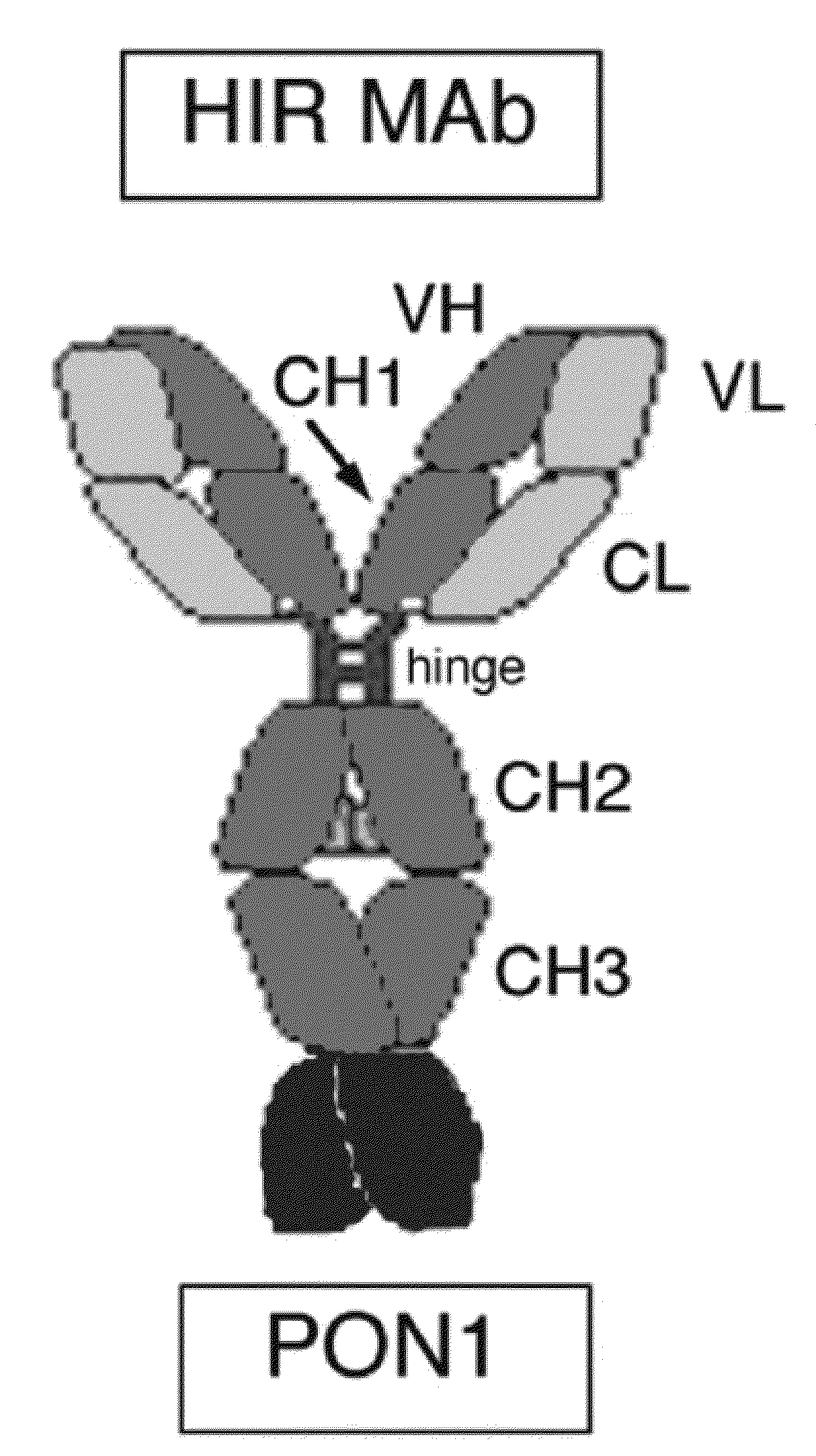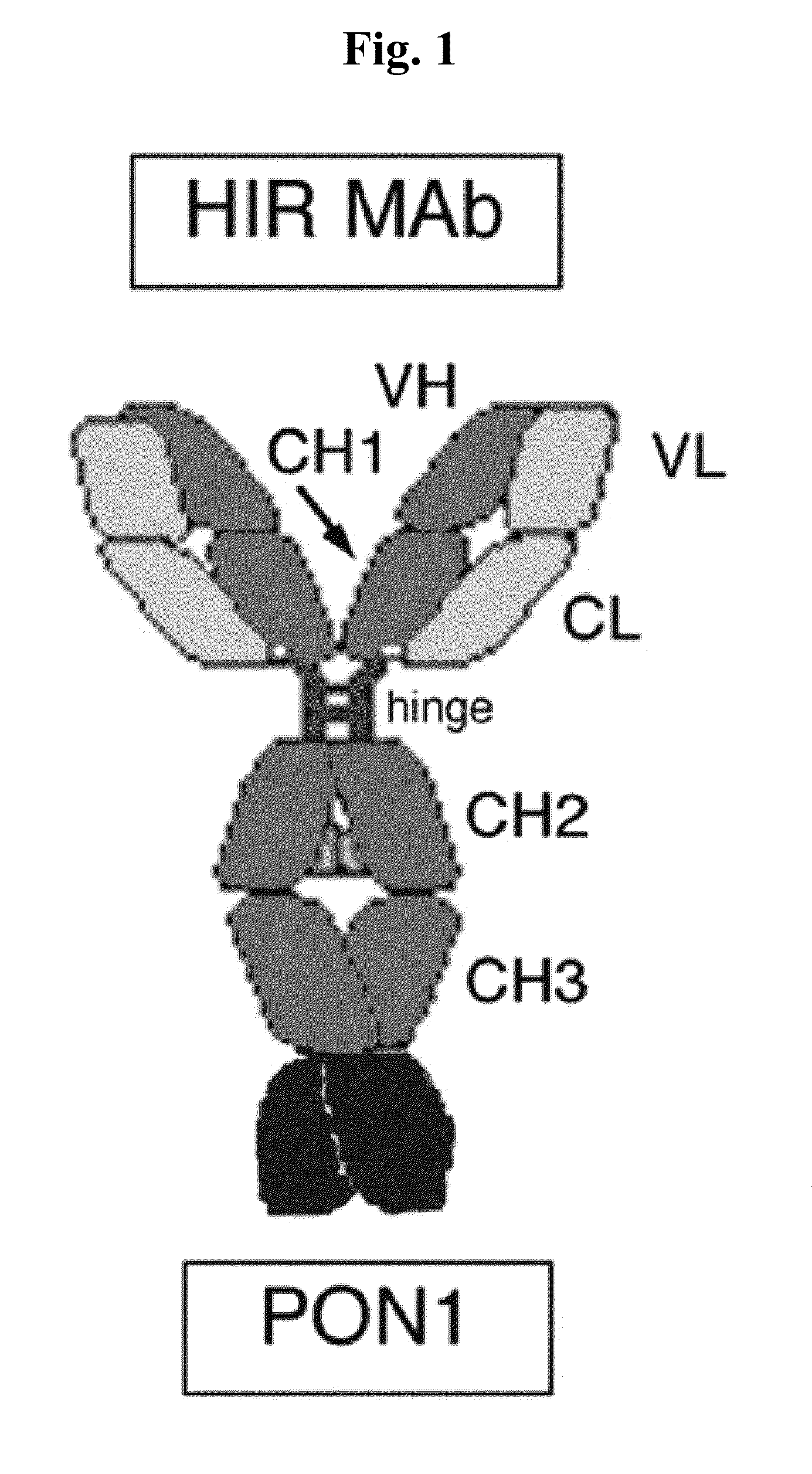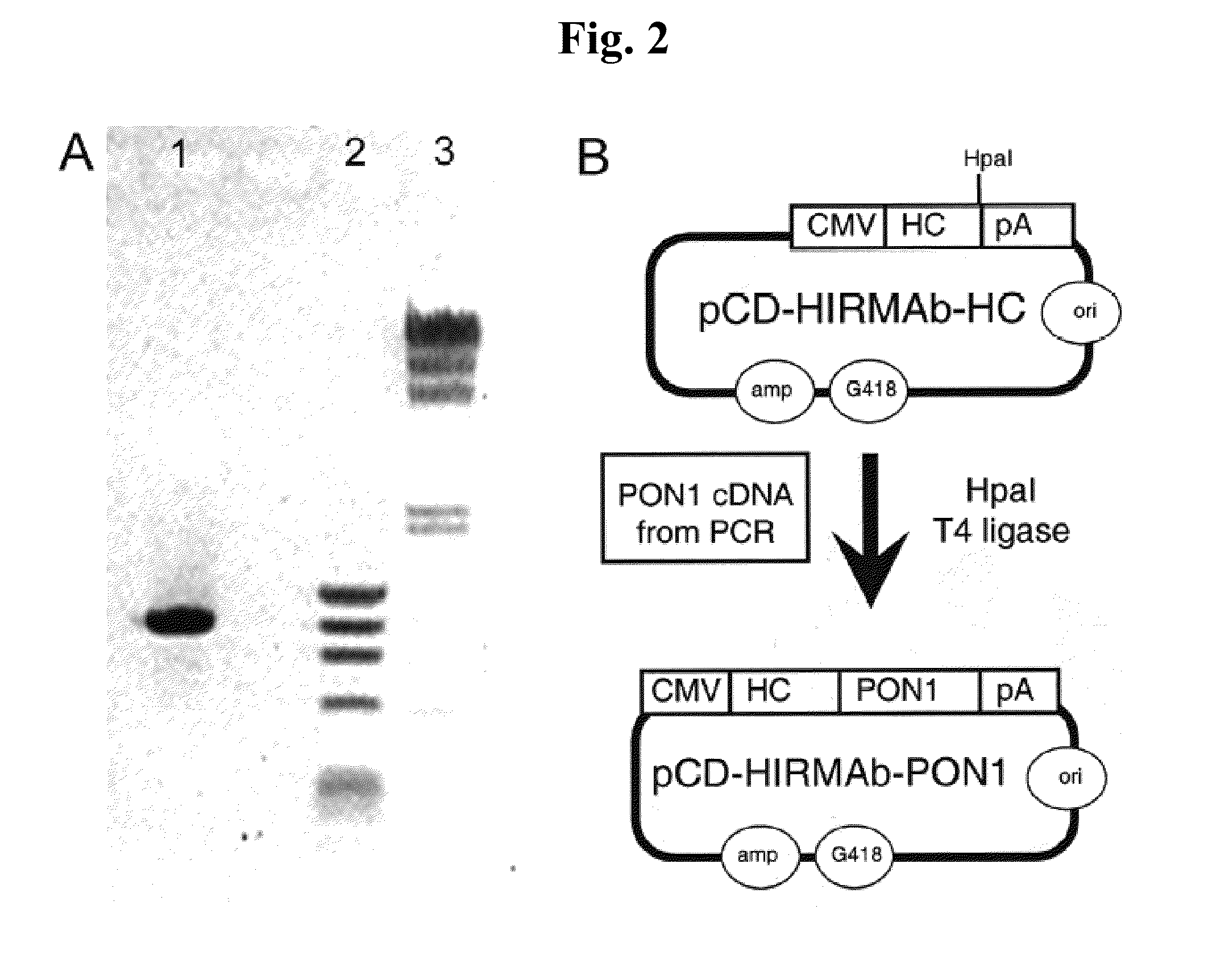Compositions and methods for blood-brain barrier delivery of organophosphatases
a technology of organophosphatase and composition, which is applied in the direction of antibody medical ingredients, drug compositions, peptides, etc., can solve the problems of severely limiting the therapeutic efficacy of an exogenous organophosphatase when administered alone, and uneven distribution of variables in the variable domain
- Summary
- Abstract
- Description
- Claims
- Application Information
AI Technical Summary
Benefits of technology
Problems solved by technology
Method used
Image
Examples
example 1
Cloning and Expression of the Human PON1 cDNA, and Requirement for Lipid Acceptor in the Medium to Enable PON1 Secretion by Transfected Host Cell
[0191]The human PON1 cDNA corresponding to amino acids Met1-Leu355 was cloned by the polymerase chain reaction (PCR) using the oligodexoynucleotides (ODNs) listed in Table 1 and cDNA derived from reverse transcription of human liver PolyA+ RNA. The forward (FWD) ODN primer (SEQ ID NO:1) introduces a Kozak sequence (i.e. CCCGACC) prior to the ATG initiation codon. The reverse ODN primer (SEQ ID NO:2) is complementary to the end of the open reading frame (orf) of PON1 plus 7 nucleotides of the 3′-untranslated region. The PON1 cDNA was cloned by PCR using 25 ng polyA+RNA− derived cDNA, 0.2 μM forward and reverse ODN primers (Table 1), 0.2 mM deoxynucleosidetriphosphates, and 2.5 U PfuUltra DNA polymerase (Stratagene, San Diego, Calif.) in a 50 μl Pfu buffer (Stratagene) containing 7% dimethylsulfoxide. The amplification was performed in a Mast...
example 2
M55L Site-Directed Mutagenesis of Human PON1
[0193]The cloned human PON1 expressed Met-55 and Arg-192 (SEQ ID NO 17). The more active PON1 allozyme, expressing the Leu-55 polymorphism, was produced with site-directed mutagenesis (SDM). The pCD-PON1 plasmid was used as template to generate the pCD-PON1-Leu55 plasmid. The SDM was performed using the QuickChange II XL SDM kit (Stratagene) and standard protocol. For this M55L SDM, forward and reverse ODNs were used (SEQ ID NOs:3 and 4, respectively); the ODNs were designed to introduce the mutation of interest, i.e. “A” for “T” at position 163 (where position 1 is the beginning of the PON1 orf), and contain 15 nucleotides at each flanking region to anneal with the target sequence. The SDM was verified by bi-directional DNA sequencing. The nucleotide and deduced amino acid sequences for human PON1-Leu55 are shown in SEQ ID NOs:18 and 19, respectively.
example 3
Genetic Engineering of Expression Plasmids Encoding Heavy Chain-PON1 Fusion Protein wherein the PON1 is Fused to Either the Amino Terminus or the Carboxyl Terminus of the HIRMAb Heavy Chain
[0194]Owing to the uncertainty as to whether a PON1 fusion protein could be engineered, and still maintain PON1 enzyme activity, the PON1 cDNA was fused to either the 5′-end or the 3′-end of the HIRMAb HC cDNA. In the construct designated PON1-HC, the carboxyl terminus of the PON1 is fused to the amino terminus of the HIRMAb HC. Since PON1 has no signal peptide, this fusion gene was engineered without a leader peptide. This heavy chain fusion protein is expressed by the pCD-PON1-HIRMAb.
[0195]In the construct designated HC-PON1, the carboxyl terminus of the HIRMAb HC is fused to the amino terminus of the PON1, as depicted in FIG. 1. The HC-PON1 included sequence encoding for a 19 amino acid (AA) IgG signal peptide. This heavy chain fusion protein is expressed by the pPON1-HIRMAb (FIG. 2B).
[0196]For...
PUM
| Property | Measurement | Unit |
|---|---|---|
| Fraction | aaaaa | aaaaa |
| Fraction | aaaaa | aaaaa |
| Time | aaaaa | aaaaa |
Abstract
Description
Claims
Application Information
 Login to View More
Login to View More - R&D
- Intellectual Property
- Life Sciences
- Materials
- Tech Scout
- Unparalleled Data Quality
- Higher Quality Content
- 60% Fewer Hallucinations
Browse by: Latest US Patents, China's latest patents, Technical Efficacy Thesaurus, Application Domain, Technology Topic, Popular Technical Reports.
© 2025 PatSnap. All rights reserved.Legal|Privacy policy|Modern Slavery Act Transparency Statement|Sitemap|About US| Contact US: help@patsnap.com



